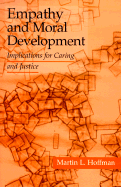Book contents
- Frontmatter
- Contents
- Acknowledgments
- 1 Introduction and Overview
- Part I Innocent Bystander
- Part II Transgression
- 5 Guilt and Moral Internalization
- 6 From Discipline to Internalization
- Part III Virtual Transgression
- Part IV Is Empathy Enough?
- Part V Empathy and Moral Principles
- Part VI Culture
- Part VII Intervention
- References
- Author Index
- Subject Index
5 - Guilt and Moral Internalization
Published online by Cambridge University Press: 05 June 2012
- Frontmatter
- Contents
- Acknowledgments
- 1 Introduction and Overview
- Part I Innocent Bystander
- Part II Transgression
- 5 Guilt and Moral Internalization
- 6 From Discipline to Internalization
- Part III Virtual Transgression
- Part IV Is Empathy Enough?
- Part V Empathy and Moral Principles
- Part VI Culture
- Part VII Intervention
- References
- Author Index
- Subject Index
Summary
We now move from the innocent bystander model to one in which the observer is a transgressive participant – transgressive because he is harming or thinking of acting in a way that may harm another. A transgression may be provoked, intentional, accidental, a by-product of conflict, or a violation of another's legitimate expectations. The moral issue is whether the transgressor is motivated to avoid the harmful act or at least feels guilty and acts prosocially afterward, and whether he or she acts in these ways even in the absence of witnesses – the hallmark of moral internalization. This chapter, then, deals with guilt and moral internalization.
Just as the bystander model is the prototypic moral encounter for the development of empathy, especially empathic distress, the transgression model is the prototypic moral encounter for empathybased guilt, especially empathy-based transgression guilt. Transgression guilt differs from bystander guilt over inaction and from “Virtual guilt” which will be discussed in chapter 7. The transgression model is also the prototypic moral encounter for moral internalization.
Empathy-based guilt is the key prosocial motive in transgressions involving harm to others and looms large in this chapter. I first introduce empathy-based guilt, give evidence for its existence and prosocial motive property, and discuss its development. The theories of moral internalization are then summarized, after which I explain the special importance of socialization, especially discipline, for guilt and moral internalization, which introduces chapter 6.
Information
- Type
- Chapter
- Information
- Empathy and Moral DevelopmentImplications for Caring and Justice, pp. 113 - 139Publisher: Cambridge University PressPrint publication year: 2000
